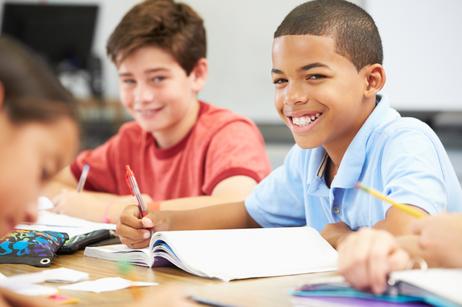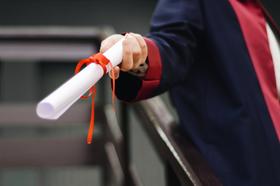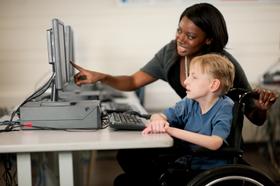The educational outlook for black boys has long been bleak. In Oakland, nearly one-third of African-American males drop out of high school. In Chicago, black boys lag behind other students in nearly every single measure of academic success. In schools throughout the nation, in large cities and small rural communities, black boys rank near the bottom in most measures of academic achievement and near the top in terms of the number of discipline referrals and suspensions.
Some of these statistics must be taken with a grain of salt, however. The American public school system has historically been less than responsive to the needs of black students, but particularly so for black males. Boys of color face many obstacles in life that include absent or unresponsive fathers, violence in the home and in their neighborhood, pressure to join gangs, and substance abuse. Yet schools regularly overlook these factors as being outside their realm of responsibility. Racial profiling by school officials, biased discipline policies, and a culture that engenders fear of young black males compound the problems for an educational system that is unprepared to manage the social, emotional, cultural, and academic needs of black boys.
Further compounding the issue is that institutional failures of public school systems serve to label young black students as something they are not. Black males are more likely to be removed from regular education settings and are more often misclassified as mentally retarded. These incorrect actions are taken due to a black student’s poor performance in the classroom; however, the cause of that poor performance is frequently due to factors other than the student’s individual abilities. Rather, schools don’t have the resources to address home and community influences on academic ability, and oftentimes do not afford the same enriched learning opportunities for black students that white students enjoy. In fact, white males are more than twice as likely to be enrolled in gifted education programs, and only minimal numbers of black boys are enrolled in AP courses.
Combined with the fact that most teachers are white women, such institutional failures can lead black boys to feel as though they have no adults with whom to identify when they are at school. However, school districts in a number of large, urban districts have implemented or are developing programs specifically geared toward supporting and promoting the success of black male students by encouraging healthy relationships with positive, adult role models.
This TED Talk discusses the academic failure rate of male African-American students.
Oakland Unified’s Office of African American Male Achievement
To help black boys overcome the myriad of obstacles they face, the Oakland Unified School District opened the Office of African American Male Achievement (AAMA). The primary function of AAMA is to fill voids in the lives of black boys who sometimes do not have a positive male influence at home and who very often do have few African-American teachers to look up to.
To resolve this issue, the AAMA established the Manhood Development Program, which serves as a positive channel from childhood into manhood. For one class period a day, boys involved in the program enter a classroom where a black mentor leads them in readings of prominent black authors, facilitates group discussions about fears of violence on the street and offers tips on practical matters such as how to tie a necktie. These mentors, many of whom are not certified teachers but members of the local community or parents of students, also provide transportation to needy kids, snacks and meals for hungry students, and other supports that black boys might otherwise lack. Essentially, they provide dependability, consistency, and love, three things many of their students do not get from the men in their lives.
Additionally, these mentors act as a liaison between their students and other teachers – the vast majority of whom are white women. If a student begins to struggle with his coursework, his mentor consults with the teacher. If a student starts missing school, his mentor is often the first one notified. Mentors are also involved in the district’s Voluntary School Study Team, which is charged with identifying barriers black students face within the Oakland Unified School District and devising solutions for overcoming those obstacles. One of the team’s first actions was to revise discipline procedures that were often biased – if not outright racist – and resulted in a disproportionate number of black students being suspended. Educating the mostly white teacher corps about how to interact with black youth and reduce possible conflict is also part of the team’s focus.
AAMA has been in full swing for three years, and the academic results thus far are encouraging. The graduation rate for boys involved in the program has risen by ten percent. The grade point average for participants in the Manhood Development Program is 2.12, as compared to 1.7 for their peers. And the suspension rate for black boys has declined by nearly one-third. Perhaps most importantly, students in the program have begun to see themselves as worthy individuals capable of changing the course of their life.
Minneapolis Public Schools Seek to Increase Success for Black Boys
As in Oakland, black boys in Minneapolis have historically not performed as well academically as have their peers. While the district discovered that some of the factors that contribute to reduced school performance are a matter of choice – such as not paying attention in class – there are also institutional issues that prevent black boys from reaching their potential. Taking a page from Oakland’s program, mentoring is a critical component of the Minneapolis Public Schools’ efforts to improve success for black boys.
A primary barrier to achievement for black boys in the city is a fundamental lack of relationship building between school personnel and their black male students. To address this issue, the district created the African American Achievement Task Force, which is similar in structure and function to Oakland’s AAMA. Focusing at least initially on ninth graders, the task force has implemented various programs that help boost student achievement and improve relationships between students and their teachers. At a very basic level, the program encourages teachers to get to know their students. In particular, teachers are asked to take the time to get to know their black male students on an individual basis in order to understand where they’re coming from, what they’ve been through, and the struggles they face each day just to make it to school. By developing empathy for each student’s personal situation, it is hoped that teachers will be more understanding and that discipline referrals will be reduced.
Another facet of the district’s relationship-building efforts has been to pair black male students with positive male role models. The 100 Strong Who Care program places small groups of black boys with a black male leader who encourages them to pursue their dreams, have confidence in themselves, and work hard in order to lift themselves out of the abject poverty in which many of the young men live. Paired with the district’s new Operation 4.0 program, in which black boys in the ninth grade are able to participate in tutoring and after-school homework help four days a week, change can be facilitated on both the academic and interpersonal fronts.
Minneapolis’ program will be fully implemented in the 2014-2015 academic year. The academic goals for the program have been set high, as have the behavioral goals: The district seeks to reduce the number of discipline referrals for black boys by 20 percent and reduce the number of suspensions by 20 percent. The project’s leaders believe this will be made more likely because of the relationship-building component that is so heavily emphasized in the program.
This video from Cornell University discusses mentoring as a way to improve academic outcomes.
Other Programs Foster Hope
Other programs from around the country demonstrate the efficacy of combining academic rigor with school staff that genuinely care for and provide guidance to their students. At the all-black Bethune Elementary School in New Orleans, students have teachers who demand hard work but also give lots of love. As a result, 88 percent of the school’s boys achieved mastery on the state’s math test in 2009. In language arts, 83 percent of boys demonstrated proficiency.
In the Baltimore City Public School System, where 88 percent of students are black, the focus is on stemming the tide of student dropouts. The district’s Great Kids Come Back program sends school officials to the front porches and apartment complexes of families whose child has dropped out of school and encourages them to come back. For the kids that do, alternative programs are available to meet their unique academic, social, and emotional needs, including accelerated programs to help kids achieve their academic goals as quickly as possible.
The Young Men’s Empowerment Program was implemented several years ago at Newark Tech High School and has since become a model for teaching students, young black males in particular, about success at school and in all realms of life. On Mondays, students are required to wear business clothing to learn how it feels to dress like a professional. Students then participate in presentations by men who have found success in the black community. These presentations include a variety of topics, from entrepreneurship to parenting to goal setting, and help students understand the vital importance an education plays for their future.
Yet other schools are seeking to make a difference through increased academic offerings. To improve the academic achievement of minority and poverty-stricken students, New Jersey’s Abbott schools offer extended-day learning and weekend courses, as well as summer school classes to help kids catch up. For students who are doing well, enrichment activities are offered to further engage them in educational endeavors. Abbott districts also offer comprehensive early childhood education for children from birth to four years of age. These programs, like Head Start, identify and address cognitive, developmental, social, and family factors that may impact a child’s ability to learn.
Personnel at Abbott schools – from the lunch lady on up to the principal – also undertake professional development in order to stay on the leading edge of educational theory and practice. By remaining students themselves, these educational professionals are able to deliver a top-notch curriculum to students that encourage everyone to succeed, regardless of life circumstances and regardless of race. Schools in Harlem, Texas, and Maryland have followed the Abbott model and have upped the ante in terms of academic opportunities available for black boys. Something else these schools have in common: They have demonstrated that when presented with the opportunity, all students can and do learn.
Looking Ahead
While the situation for black boys – and other minority boys as well – is still not equitable to that of their white peers, some aspects of the situation do seem to be improving. Since 2002, the number of black boys graduating from high school on time has increased by 10 percent. Scores for black students on the National Assessment of Educational Progress have risen dramatically in the last 40 years. In fact, black students have improved their performance at a rate that exceeds white students.
However, reversing the trend of underserving black boys is not nearly complete, and according to many experts, the process is not moving quickly enough. Even with the significant gains in achievement discussed above, students of color today are only performing at a level that white students achieved 25 years ago. If public schools are to do their black male students any justice, devising and implementing programs like those in Minneapolis and Oakland that support multiple facets of a young man’s life should become mainstream. These issues cannot be fixed by serving just a few thousand boys each year. Institutional change is needed. Only when all kids are given tools to succeed, offered guidance from mentors, and provided with hope for a better future will they be able to perform to the best of their abilities and achieve their goals.
Questions? Contact us on Facebook. @publicschoolreview















